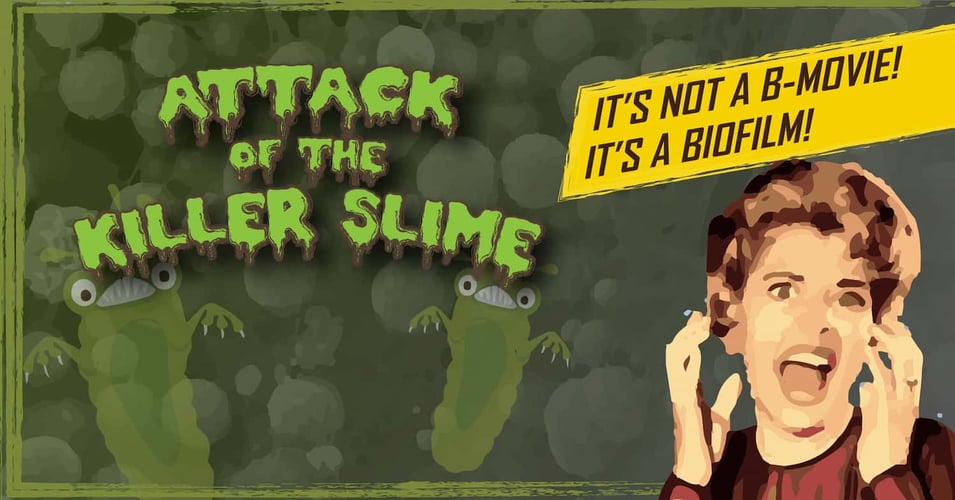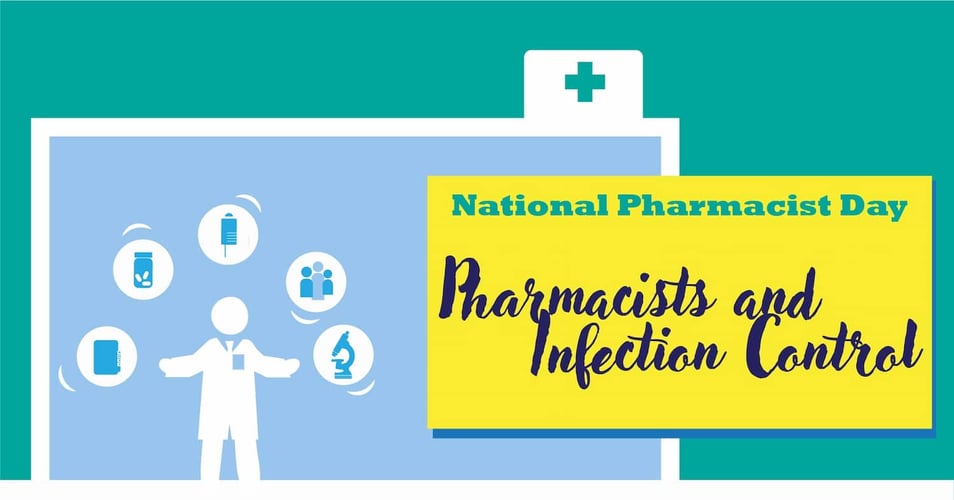The Horrors of Biofilms: Like Jason, They Keep Coming Back

We experience the ickiness and inconvenience of biofilms every day. From slow drains to tooth plaque, biofilms surround us because bacteria surround us. But take our everyday annoyance with biofilms such as a gunky sink pipe or teeth that need to be brushed twice daily and multiply that exponentially and you begin to have an idea of the horror biofilms present to industries and healthcare planet-wide. Today we'll explore the tenacious, intractable, just-as-likely-to-return-as-Jason nature of bacteria's number one weapon: biofilms.
Wherever there is water and a submerged surface, biofilms will most likely develop. This includes your sink drain, pool components, baby pacifiers, and cutting boards (yes, go clean all those things with bleach right now. We'll wait.). On the industrial scale, this applies to any manufacturing process that uses water: paper manufacturing (not just writing paper, but paper products, cardboard boxes, etc.), water treatment plants, nuclear cooling towers, photo processing, food processing, as well as industries that take place on the water, from coastal factories to Navy ships. These industries rely on the storage and movement of water and fluids in containers and pipes, all of which provide an excellent surface for biofilm formation. Some estimates of the financial cost of biofilms is around $200 billion per year in the US alone: these costs include crops lost to biofilms of fungus, the cost of keeping water supplies clean, costs of replacing equipment due to corrosion, and the cost of maintenance and upkeep required to keep biofilms at bay.
Unfortunately, those costs include human lives when it comes to biofilms and healthcare. Growing research demonstrates that many of humans' chronic infections are caused by biofilm formation inside the body or on implanted medical devices. Biofilms form more readily on dead or damaged tissue or foreign objects; this process is slow, but an established biofilm is resilient to our immune system's defenses, to antibiotics, and most other treatments. The result is a recurring, chronic infection such as cystic fibrosis leading to loss of lung function, periodontitis leading to tooth loss, and chronic wound infections preventing complete healing (thrill seekers, go here. No really, don't.). The introduction of medical devices into the body present more opportunities for biofilms, such as when a central venous catheter becomes infected, leading to possible entry of bacteria into the bloodstream. It is believed that the established biofilm continues to send out free-floating bacteria, causing an infection flare-up that responds to antibiotics, leaving the main biofilm safe to persist. And with the knowledge that 80-90% of bacteria live in biofilms, this scenario seems a very likely cause of many chronic infections. (A full list of medical biofilms can be found here.)
![]() Why are biofilms so hard to kill? How do they keep coming back, even after strong cleaners and pharmaceutical treatments? There are many possibilities. It could be that antibiotics have a difficult time penetrating the surface of the biofilm due to the nature of the structure of the biofilm matrix. It could be that the biofilm as a whole has an adaptive stress response that protects part of the biofilm while other parts perish. In a truly nightmarish twist, the biofilm bacteria may also produce persister cells, dormant versions of bacterial cells that are so slow-growing that they don't ingest enough of any antibiotic to be destroyed. While the majority of a biofilm continues to grow and take their chances on survival, a small number of cells are, say, put into suspended animation to survive the antibiotic storm and live to infect again. There are treatments being researched to overcome persister cells and other biofilm strengths, but there is still much to learn.
Why are biofilms so hard to kill? How do they keep coming back, even after strong cleaners and pharmaceutical treatments? There are many possibilities. It could be that antibiotics have a difficult time penetrating the surface of the biofilm due to the nature of the structure of the biofilm matrix. It could be that the biofilm as a whole has an adaptive stress response that protects part of the biofilm while other parts perish. In a truly nightmarish twist, the biofilm bacteria may also produce persister cells, dormant versions of bacterial cells that are so slow-growing that they don't ingest enough of any antibiotic to be destroyed. While the majority of a biofilm continues to grow and take their chances on survival, a small number of cells are, say, put into suspended animation to survive the antibiotic storm and live to infect again. There are treatments being researched to overcome persister cells and other biofilm strengths, but there is still much to learn.
The lesson to take away from this frightening exploration is that free-floating bacteria, also called planktonic bacteria, are relatively easy to kill, so destroying them quickly, continuously, and effectively is key. Kill them before they can form a biofilm!
Editor's Note: This post was originally published in June 2015 and has been updated for freshness, accuracy and comprehensiveness.
![EOScu Logo - Dark - Outlined [07182023]-01](https://blog.eoscu.com/hubfs/Eoscu_June2024/Images/EOScu%20Logo%20-%20Dark%20-%20Outlined%20%5B07182023%5D-01.svg)

![[infographic] Modes of Transmission Download and share!](https://no-cache.hubspot.com/cta/default/216314/interactive-178287789067.png)



